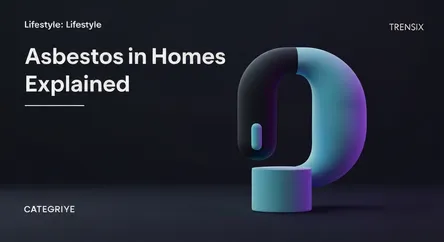Lifestyle
Asbestos in Homes Explained

Learn what asbestos is, the health risks it poses, and why it's a critical issue for homeowners and buyers of older properties. Stay informed.
What is it?
Asbestos is a group of six naturally occurring fibrous minerals known for their durability, fire resistance, and insulating properties. Because of these qualities, it was a popular material in home construction for much of the 20th century. It can be found in a wide range of materials, including ceiling and floor tiles, insulation, roofing shingles, cement siding, and pipe wrap. When these materials are intact and undisturbed, they generally pose little risk. However, when they are damaged, cut, or disturbed during renovations, they can release microscopic fibers into the air.
Why is it trending?
The topic of asbestos is trending due to a surge in renovations of older homes built before the 1980s. As homeowners and DIY enthusiasts tackle remodeling projects, the risk of unknowingly disturbing asbestos-containing materials (ACMs) increases. Furthermore, growing public health awareness and stricter regulations regarding real estate disclosures and occupational safety have brought the issue to the forefront. Buyers are more cautious, and sellers are often required to test for and disclose the presence of asbestos, making it a key point in property transactions.
How does it affect people?
Inhaling asbestos fibers poses severe health risks, leading to serious diseases like asbestosis (a chronic lung condition), lung cancer, and mesothelioma, a rare and aggressive cancer. These conditions can take decades to develop after exposure. For homeowners, the discovery of asbestos can have significant financial implications. Professional abatement is expensive and legally required in many areas. Its presence can decrease property value, complicate sales, and increase insurance costs, making it a critical health and financial concern for anyone living in or purchasing an older home.